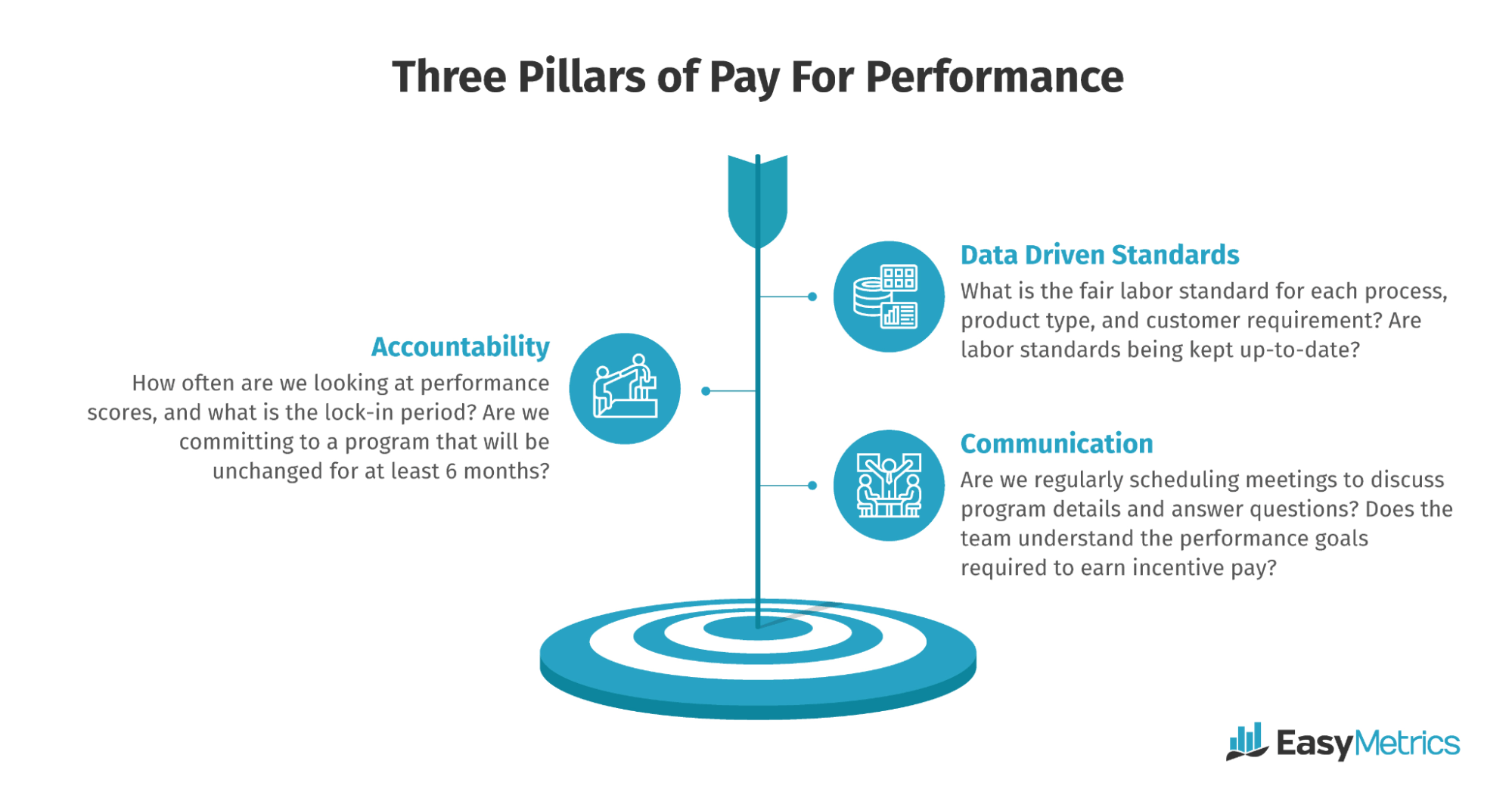This article will delve into the concept of performance-based pay and its impact on employee retention. In today's competitive business landscape, attracting and retaining top talent is paramount if your organisation is striving for success.
Traditional compensation structures often fall short in motivating employees to go above and beyond, leading to increased turnover rates and a loss of valuable expertise. However, performance-based pay offers a solution by aligning rewards with individual performance, fostering a culture of excellence, and driving employee engagement.
Throughout this article, we will explore the benefits of implementing performance-based pay and the potential challenges organisations may face during the process. By understanding the key considerations and best practices, businesses can effectively design and execute a performance-based pay strategy that fuels employee retention and organisational growth.
Understanding Performance-Based Pay and Its Role in Employee Retention
Performance-based pay is a compensation approach where an employee's salary or incentives are directly linked to their performance and achievements. It provides a clear incentive structure that rewards high performers, fosters a sense of fairness, and encourages continuous improvement. When implemented effectively, performance-based pay can significantly contribute to employee retention by:
Recognising and rewarding high performers: By linking compensation to individual contributions, high-performing employees feel valued and appreciated, enhancing their job satisfaction and commitment to the organisation.
Motivating and engaging employees: Performance-based pay systems create a sense of purpose and drive among employees, encouraging them to set and achieve challenging goals and excel in their roles.
Promoting a culture of meritocracy: Employees perceive that their efforts and achievements are recognised and rewarded, fostering a culture of fairness, healthy competition, and professional growth.
Benefits and Challenges of Implementing Performance-Based Pay
Implementing performance-based pay offers several benefits for organisations, but it also comes with its share of challenges. Let's explore both aspects:
Benefits of Performance-Based Pay
Increased productivity and performance: When employees know that their efforts directly impact their compensation, they are motivated to perform at their best, resulting in higher productivity and overall organisational performance.
Enhanced employee satisfaction and retention: Performance-based pay systems recognise and reward exceptional performance, leading to higher job satisfaction and increased employee retention rates.
Improved alignment with organisational goals: By linking compensation to performance, employees are more likely to focus their efforts on achieving organisational objectives, leading to better alignment and goal attainment.
Challenges of Performance-Based Pay
Objective measurement and fairness: One of the primary challenges of implementing performance-based pay is developing a fair and objective performance evaluation system. It is essential to establish clear criteria and standards for evaluating employee performance to ensure that the process is perceived as transparent and unbiased.
This requires careful consideration of factors such as the selection of performance metrics, calibration of performance ratings, and consistency in evaluation across different teams and departments.
Achieving a balance between objectivity and subjectivity can be a complex task, as subjective judgments and personal biases may influence the evaluation process. Organisations must invest in training managers on fair evaluation practices and provide guidelines to ensure consistency and fairness throughout the performance assessment.
Defining clear performance metrics: Another challenge is defining clear and meaningful performance metrics that align with job responsibilities and contribute to organisational success. It is crucial to identify key performance indicators (KPIs) that accurately reflect employee contributions and the desired outcomes of their roles.
This requires a thorough understanding of job requirements and expectations, as well as aligning metrics with broader organisational goals. Additionally, performance metrics should be specific, measurable, attainable, relevant, and time-bound (SMART) to provide employees with clear targets and facilitate accurate performance assessment.
Striking the right balance between quantitative and qualitative metrics can also be a challenge, as certain roles may have more subjective aspects that are harder to measure objectively.
Managing resistance and motivation: Introducing a performance-based pay system can trigger resistance and concerns among employees. Some may question the fairness of the system or worry about increased competition and its impact on teamwork.
It is essential for businesses to effectively communicate the rationale behind performance-based pay and its benefits to employees. Transparent communication about the objectives, criteria, and rewards associated with the system can help alleviate concerns and increase acceptance.
Additionally, companies must ensure that the performance-based pay system is motivating and encourages employees to strive for excellence. Designing the system to provide meaningful rewards and recognition for exceptional performance is vital.
Regular feedback, coaching, and development opportunities can also contribute to maintaining high levels of employee motivation and engagement.
Best Practices for Designing a Performance-Based Pay System

To implement an effective performance-based pay system, organisations should consider the following best practices:
Establish clear performance expectations
Clearly define performance criteria and expectations, ensuring they are aligned with company goals and individual job roles.
Develop measurable performance metrics
Design objective performance metrics that can be quantified, tracked, and evaluated consistently across different roles and departments.
Provide regular feedback and coaching
Implement a feedback-rich culture where managers provide ongoing guidance and support to employees, helping them improve their performance and achieve their goals.
Incorporate fairness and transparency
Ensure that the performance evaluation process is fair, transparent, and based on objective criteria. Communicate the process clearly to employees, addressing any concerns or questions they may have.
Successfully Executing a Performance-Based Pay Strategy

To effectively execute a performance-based pay strategy, employers should consider the following steps:
Communicate the rationale and benefits
Clearly communicate the objectives, benefits, and expected outcomes of the performance-based pay system to employees, managers, and stakeholders to gain their support and buy-in.
Train managers and evaluators
Provide comprehensive training to managers and evaluators on how to conduct fair and effective performance evaluations, provide feedback and make informed compensation decisions based on performance outcomes.
Establish a structured performance review process
Implement a formalised performance review process that includes regular check-ins, mid-year reviews, and end-of-year evaluations. This ensures ongoing performance monitoring and provides opportunities for feedback and goal setting.
Align performance with rewards
Design a compensation structure that aligns with performance levels, offering differentiated rewards based on individual and team achievements. This can include merit-based salary increases, performance bonuses, or recognition programs.
Monitor and evaluate the system
Continuously assess the effectiveness of the performance-based pay system through data analysis, employee feedback, and key performance indicators. Make necessary adjustments to improve the system's fairness and impact.
Case Studies: Successful Implementation of Performance-Based Pay Systems
Acme Software Solutions
Acme Software Solutions, a leading software development company, implemented a performance-based pay system to foster a culture of excellence and drive employee motivation. The company established clear performance metrics aligned with key objectives, including project completion, customer satisfaction, and innovation.
High-performing employees were rewarded with performance-based bonuses and salary increases. Additionally, the company provided ongoing feedback and coaching to help employees understand their performance expectations and improve their skills.
As a result, Acme Software Solutions experienced a significant increase in employee productivity, job satisfaction, and retention rates. The performance-based pay system played a crucial role in creating a performance-driven culture and attracting top talent to the organisation.
Stellar Sales Agency
Stellar Sales Agency, a renowned sales organisation, implemented a performance-based pay system to incentivise and reward its sales representatives based on their individual performance and achievements.
The company established a commission structure that directly correlated with sales targets, allowing employees to earn higher incentives for exceeding their goals. Stellar Sales Agency also provided continuous sales training and development opportunities to equip its sales team with the skills needed to succeed.
By implementing the performance-based pay system, the company witnessed a significant improvement in sales performance, employee motivation, and retention. The transparency and fairness of the system created a competitive and results-oriented environment, driving employees to strive for excellence and contribute to the company's overall success.
Addressing Work-Life Balance in Performance-Based Pay Systems
One crucial aspect often overlooked in the discussion of performance-based pay is its impact on work-life balance. While this compensation model can indeed drive employee performance and reduce turnover, it's essential to consider how it may affect the overall work environment and employee well-being.
A poorly designed system could inadvertently encourage employees to work harder at the expense of their personal lives, leading to burnout and, paradoxically, increased employee turnover. Therefore, a well-rounded employee retention program should incorporate measures to maintain a healthy work-life balance.
This can be achieved through career development opportunities that focus not just on immediate performance metrics but also on long-term growth and work-life balance.
By doing so, organisations can create a more sustainable performance-related pay system that not only motivates employees but also takes into account their well-being, thereby enhancing employee retention strategies and reducing the cons associated with such systems.
Conclusion
In conclusion, implementing a performance-based pay system can significantly contribute to employee retention, motivation, and company success. By aligning compensation with performance, organisations can create a culture of excellence, foster employee engagement, and drive improved business outcomes.
While challenges may arise during implementation, following best practices, learning from successful case studies, and seeking external resources can help organisations navigate the process and maximise the benefits of performance-based pay.
Start your journey towards a high-performance culture by embracing performance-based pay and empowering your employees to reach their full potential.

